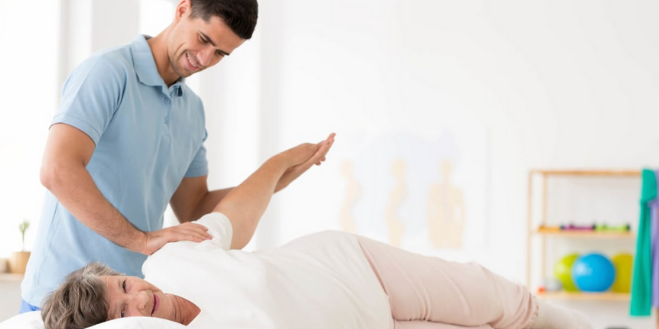Hands up if you’ve ever had a hip issue?
It's pretty common right?
They’re more common than we’d like to admit, and are often a risk factor in the development of injuries lower down the chain in the leg, knee and ankle. It's our job to assess whether it's the source of pain or injury, a symptom or a perpetuating factor.
Some of the more common list of hip injuries include:
Hip osteoarthritis.
FAI or femoroacetabular impingement.
Bursitis.
Tendinopathies - most common being the gluteus medius tendon.
In the event that the hip is the source of dysfunction for pain lower down in the chain would include injuries like ankle sprains/strains, ankle osteoarthritis, patella tendinopathies, patello femoral pain syndrome, and knee osteoarthritis.
It is imperative when assessing the hip for injuries that we really understand the anatomy, specifically with the power generators and the stabilisers. The main power generator of the hip is the gluteus maximus and the top (proximal) hamstring. These guys help drive forces through the hip to generate forward and backward movements. The stabilisers of the hip, and arguably the biggest hip injury offenders, are the gluteus maximus and minimus. These guys sit on the outside of the hip and help stabilise side to side movements of the hip. Funnily enough, there are little research papers that don’t differentiate the 2, and more emphasis is placed on the gluteus medius.
So how bout we look at the function of each the gluteus medius and minimus muscles in the table below provided by Semciew et al 2013. This will help us with choosing the appropriate rehab and why it's important.
Gluteus Medius and Minimus Functions
Let’s have a look at the different types of gluteus medius and minimus rehab exercises and how much Maximum Voluntary Isometric Contraction (MVIC), or the percentage of contractile tissue.
Take note: Reiman et al 2012 stated that 40% MVIC is the level of activity believed to be required during exercise to improve muscle strength.
GMED Rehab
Commonly gluteus medius rehab exercises are:
Clams (38-40% MVIC)
Sideways Lunge (39% MVIC)
Pelvic Drops (57% MVIC)
Unilateral Bridge (47% MVIC)
Research has found that the most effective are:
Side-bridge to neutral spine position (74% MVIC)
Single leg squat (64% MVIC)
Side-bridge to neutral spine position video
How often have you been given one of the exercises from what the research suggests? Pretty significant in difference of results aren’t they?
Now remember what we said above about what little research there is differentiating gluteus minimus and medius? Moore et al 2019 states “The most effective exercises are those in standing positions with banded resistance” and there was “extremely poor research on isolation of the gluteus minimus muscle, and EMG data to support specific exercises”.
GMIN Rehab
Minimal research has found that the most effective exercises are:
Anterior segment
Resisted hip abduction extension exercise (51% MVIC)
Posterior segment
SL bridge (49% MVIC)
Side Lying Hip Abduction (43% MVIC)
Resisted Hip Abduction Extension (43% MVIC)
Single Leg Squat (40% MVIC)
Resisted hip abduction extension video
SL bridge video: same as above.
From the point of view of the practitioner in assessing and rehabilitating the hip, it's important to understand the differences in the function of the gluteus medius and minimus. Being able to understand and recognise what the current research states in accordance with specific types of rehab exercises and how much contractile tissue is involved with each is important when treating hip pathology. In other words, which exercises isolate the muscle we are trying to target globally in movement patterns and specifically. It’s not a cut case of “out with the old and in with the new”. Factors like demographics, non/partial/full weight bearing progression, and even patient reference need to be taken into account.
This is where we as practitioners have a duty of care to our clients to stay up to date with current research so that we can use the best evidence based medicine to assist in treatment and rehabilitation.


















